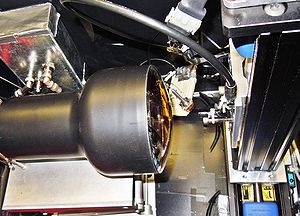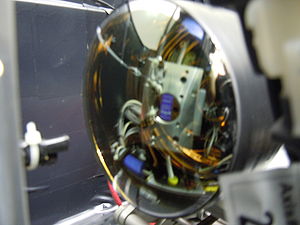Difference between revisions of "MainPage:Nuclear:KaonDetector:PMTCharacteristics"
Jump to navigation
Jump to search
| Line 23: | Line 23: | ||
== Previous analysis of PMT's gain == | == Previous analysis of PMT's gain == | ||
| − | The University of South Carolina had analyzed the PMT before it comes to JLab. It was done in the summer of 2011. | + | The University of South Carolina had analyzed the PMT before it comes to JLab. It was done in the summer of 2011. The plots with the main characteristics of each PMT, separated by its serial number, is shown in [[MainPage:Nuclear:KaonDetector:PMTCharacteristics:GainPlots|Gain Plots]]. |
A table with these data can also be download as a spreadsheet: [[File:PMTcatalog.xls PMTcatalog.xls]]. | A table with these data can also be download as a spreadsheet: [[File:PMTcatalog.xls PMTcatalog.xls]]. | ||
Revision as of 11:31, 14 March 2012
| This page is under construction. It requires a review! |
| ⇐ Back to the Kaon Detector page |
Objectives of PMT Characterization
The group is performing different experiments with some PMT to construct a tool to analyse the equipment that will be used in the aerogel detector.
Since the Summer 2011, the Nuclear Physics group at CUA is performing tests on the following PMTs:
- PMT model XP4500B S/N 09641 (with electronic base #101)
- PMT model XP4500B S/N 09650 (with electronic base #102)
- PMT model XP4500B S/N 01414 (with electronic base #100)
Control and data acquisition
- Coda Logbook: Some details on the data acquisition are registered in the online logbook.
- COSMOS_Files:Page with the codes used in COSMOS to scan the PMTs
Previous analysis of PMT's gain
The University of South Carolina had analyzed the PMT before it comes to JLab. It was done in the summer of 2011. The plots with the main characteristics of each PMT, separated by its serial number, is shown in Gain Plots.
A table with these data can also be download as a spreadsheet: File:PMTcatalog.xls PMTcatalog.xls.
Position dependence of incident photon
Details on the step motor that are being used in the position dependence experiment can be found in the following links:


